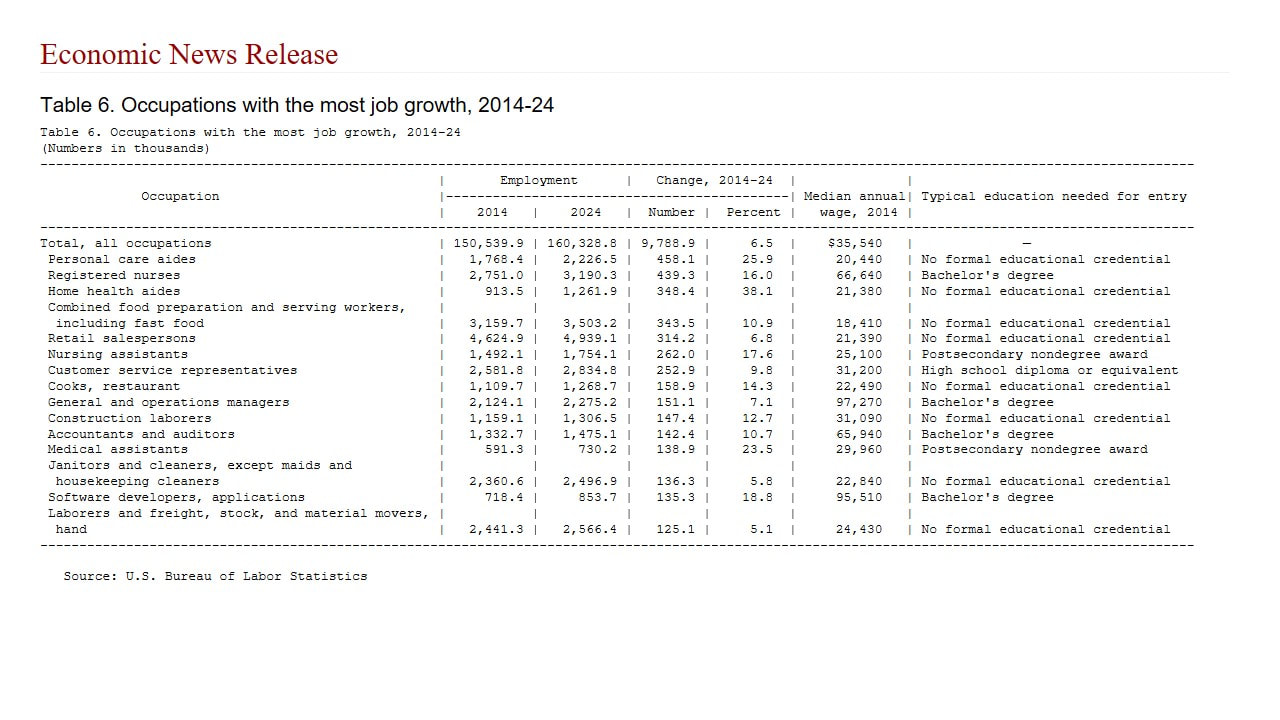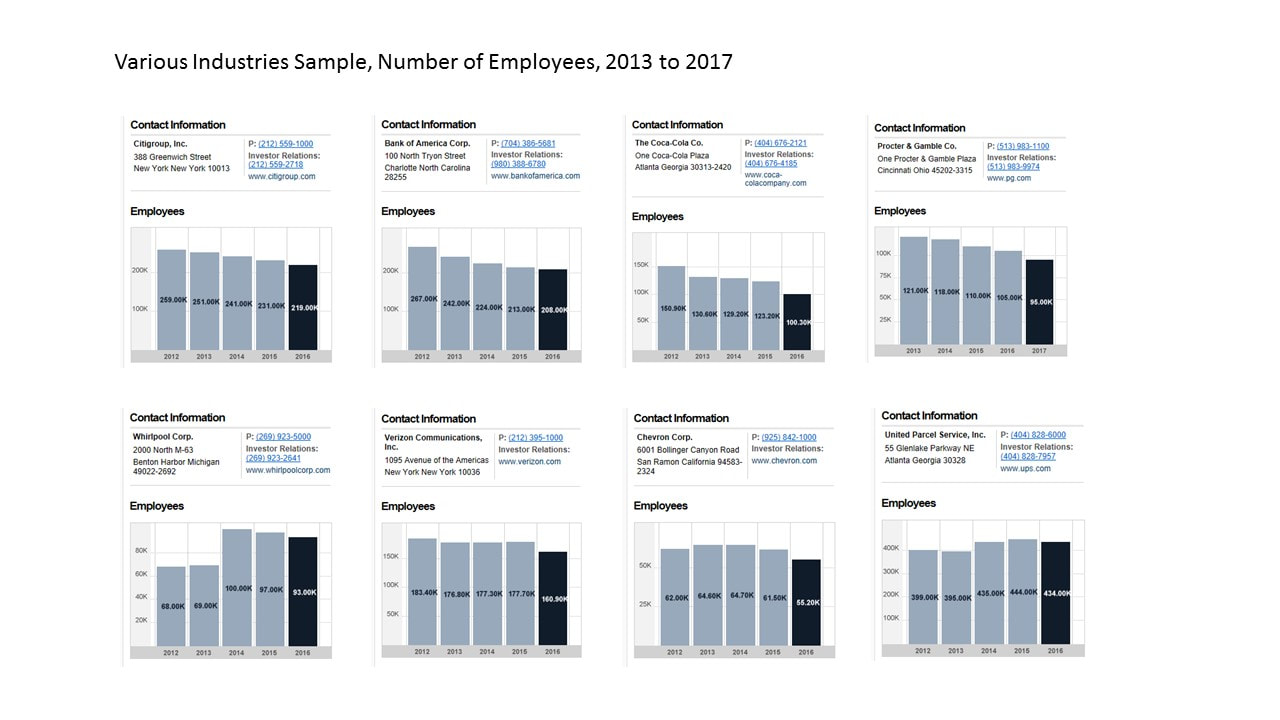Salaries will not grow in the next decades, and it is essential to understand the reasons and the impact on all of us. This week, CNN released an article entitled This is the biggest mystery in the U.S. economy. "Who killed inflation?", they asked. "It's the most puzzling problem in the U.S. economy today. Even Federal Reserve leaders are scratching their heads. Normally in a healthy economy, as unemployment goes down, workers earn more in their paychecks and prices for goods go up -- ideally more than 2% annually".
But that is not the case.
We might find a reasonable explanation on the dynamics of the job market impacted by the ongoing digital revolution. For most of us, it has been a while since last significant salary raise. Smart marketers are acutely aware of the trend, holding prices of services and goods down, and preserving a healthy demand growth while pushing inflation to lower levels. Despite many macroeconomic dynamics the FED and other organisms are looking up to solve the puzzle, we might have a plausible answer in the subtleties of the job market. Here is what we at Collective Brains think about this.
Many simultaneous micro-dynamics are ongoing, resulting in an unforeseen jobs creation polarization process on the two ends of the wages spectrum. The trend is an explosion of jobs in the gig economy and other low wage ones on one end, and a healthy demand for highly educated jobs, especially STEM ones on the other. In the middle, every position is at risk of displacement as most companies aim to increase profitability by deploying new technologies and flatting the organization. Technologies like automation, machine learning, AI, and robotics are progressively replacing human jobs at scale, and that is especially true for that middle management population, where computers are starting to understand context, process Natural Language and develop cognitive capabilities. The aim is to eliminate jobs with higher compensation by both reducing managerial levels and organization levels, with a positive impact on the bottom line. Top lines can be positively impacted too as the process also creates more agility and increase employee’s overall efficiency, freeing time to give customers more attention.
At a macroeconomy level, even though we might see low unemployment rates, the numerically subtle tradeoff of highly compensated jobs by the explosion of low wage ones will keep average labor earnings stagnated or declining. That trend shows the real threat the fourth industrial revolution is posing on the middle class in the next decades, and numbers are starting to show.
Let's look at some of them.
First, the most recent Bureau of Labor Statistics (BLS) study projecting job growth by major occupational groups to the year 2024 shows that out of the top 15 occupations with the most job growth since 2014, 12 or 80% of them present median annual wage below the national average of 35,540 dollars. It seems the job market is skewing lower by job profile and driving growth of occupations that make less money (table 6).
But that is not the case.
We might find a reasonable explanation on the dynamics of the job market impacted by the ongoing digital revolution. For most of us, it has been a while since last significant salary raise. Smart marketers are acutely aware of the trend, holding prices of services and goods down, and preserving a healthy demand growth while pushing inflation to lower levels. Despite many macroeconomic dynamics the FED and other organisms are looking up to solve the puzzle, we might have a plausible answer in the subtleties of the job market. Here is what we at Collective Brains think about this.
Many simultaneous micro-dynamics are ongoing, resulting in an unforeseen jobs creation polarization process on the two ends of the wages spectrum. The trend is an explosion of jobs in the gig economy and other low wage ones on one end, and a healthy demand for highly educated jobs, especially STEM ones on the other. In the middle, every position is at risk of displacement as most companies aim to increase profitability by deploying new technologies and flatting the organization. Technologies like automation, machine learning, AI, and robotics are progressively replacing human jobs at scale, and that is especially true for that middle management population, where computers are starting to understand context, process Natural Language and develop cognitive capabilities. The aim is to eliminate jobs with higher compensation by both reducing managerial levels and organization levels, with a positive impact on the bottom line. Top lines can be positively impacted too as the process also creates more agility and increase employee’s overall efficiency, freeing time to give customers more attention.
At a macroeconomy level, even though we might see low unemployment rates, the numerically subtle tradeoff of highly compensated jobs by the explosion of low wage ones will keep average labor earnings stagnated or declining. That trend shows the real threat the fourth industrial revolution is posing on the middle class in the next decades, and numbers are starting to show.
Let's look at some of them.
First, the most recent Bureau of Labor Statistics (BLS) study projecting job growth by major occupational groups to the year 2024 shows that out of the top 15 occupations with the most job growth since 2014, 12 or 80% of them present median annual wage below the national average of 35,540 dollars. It seems the job market is skewing lower by job profile and driving growth of occupations that make less money (table 6).
The same study shows that in the 2014-24 decade (table 4), those new jobs will have a weighted median annual wage average of 44,220 dollars what could be good news as it represents a growth of 24.4% over the overall 2014 market median. The problem is that the projection does not go deep to understand the impact of new technologies like automation, machine learning, AI, and robotics. The last predictions of the effects of those technologies in the labor market show that in average, 30% of all the activities performed has a potential to be replaced by a bot (depending on the profession). Just to have a rough estimate and get a grip on the impact of those technologies on wages, we can apply that percentage to the occupations highly exposed to information technology only. The weighted median projection will fall to 34,817 dollars, 2% below the 2014 national average. That means, no wages growth in the next seven years. If we consider those projections might be conservative as technology adoption and deployment tend to escalate faster than most forecasts, we might even since the median wage declining, what could also trigger prices deflation.
Undoubtedly that is not a comfortable conversation for big corporations or policymakers while clear solutions are not identified to create a counter cycle. Big businesses have already started to rationalize their payrolls and please note the group has a more prominent participation in middle management types of roles. Despite the stock market growth in the last three years, with S&P 500 adding 31% of value in average, payrolls are reduced steadily in many cases. Fewer industries are adding jobs. In most of the cases, those are the ones with salaries below the current national average as fast food chains and retailers. Most tech sector companies are also adding new high education jobs, but not necessarily increasing the annual median or being enough to offset losses. Here is a closer look at the biggest employers in the US.
As the fourth industrial revolution deploys its disruption in the job market, we urge tech companies developing new technologies and lawmakers to act fast, and think on real solutions. We are raising awareness and motivate people to be actively engaged and ready to embrace this future as the full impact of those technologies will hit in a decade or so. At collectivebrains.org we invest in startups connected with the future of work and the future of education and tech companies leading the AI agenda.
Join us on creating a better future with equal opportunity to everyone. Help us find solutions for the future of work.
Join us on creating a better future with equal opportunity to everyone. Help us find solutions for the future of work.






 RSS Feed
RSS Feed